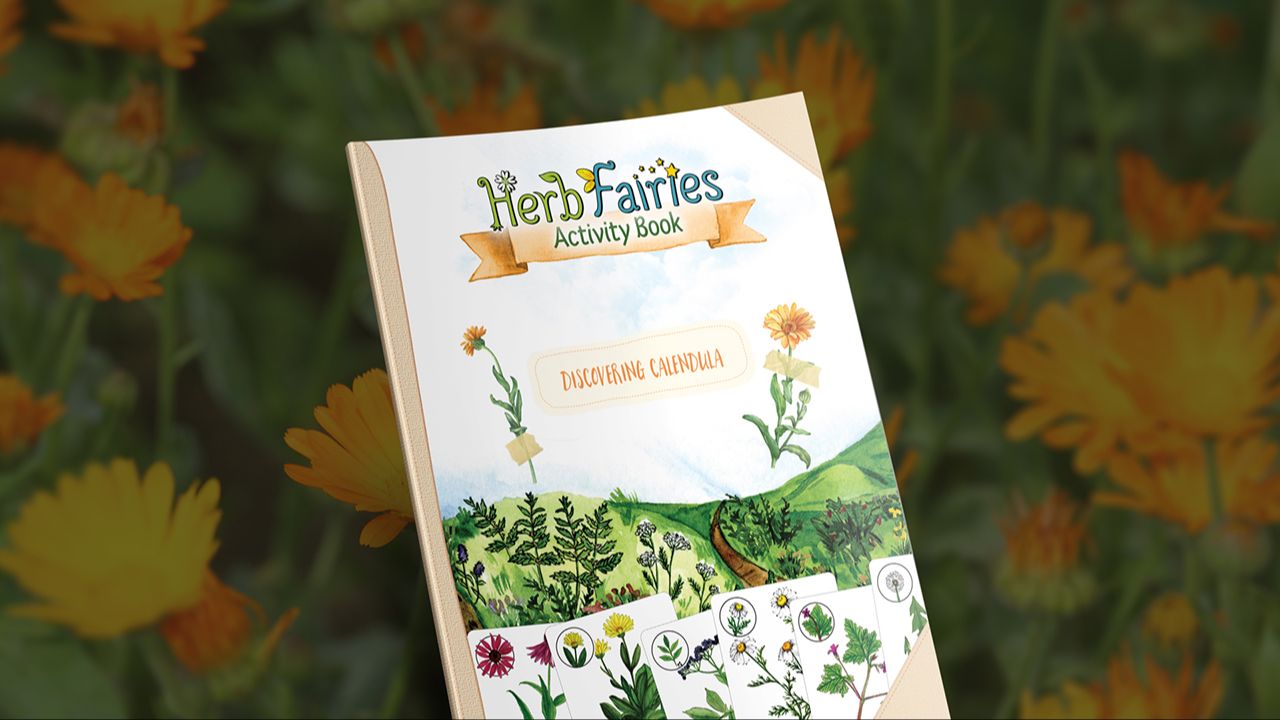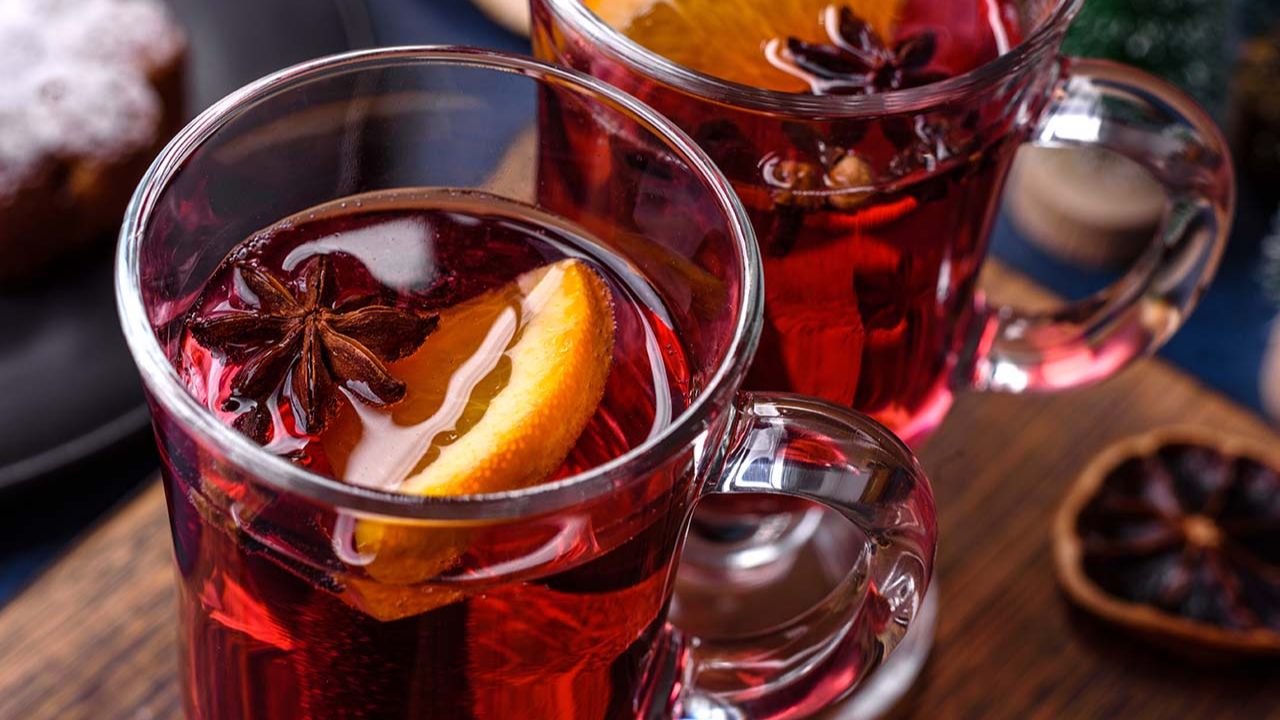
Corn Silk Uses and Plant Monograph
Corn is closely associated with the cultures of Indigenous Americans for whom it is integral to many aspects of life, including ceremonies, rituals, myths, stories, traditions, and food. Providing sustenance for the original peoples, it was the primary grain consumed in Central America.
It is speculated that corn was developed over 20,000 years, and all varieties developed before the Europeans arrived in the New World. Scientists believe that corn is autochthonous in the Americas, and is native to the southern U.S. Others postulate that corn was domesticated from the wild plant teosinte, Zea mexicana, in Mexico’s Tehuacan Valley.1
In addition to the many variations of food and fermented beverages prepared from corn, corn silk provides valuable medicine. Each kernel of corn is a fertilized flower, which has a long style and stigmata that emerges from the ovary to be pollinated — that portion of the corn flower is known as “corn silk.” Providing important medicinal actions, corn silk supports the urinary tract, eases bladder infections, and soothes inflamed mucous membranes.
Should you find yourself shucking corn in the summer, be sure to save the silk. Cut off the shriveled, brown silk at the top of the ear of corn reserving only the long, slender, fresh silk for medicinal use. Cornsilk’s color varies due the kernel color; heirloom varietals may have a purple, deep red, orange, or blueish hue, while variations of green to light yellow are most common in yellow corn.
When cultivating corn for the silk, be sure to harvest the ears prior to the kernel’s pollination, when the cob is small and the silk is prolific. Check throughout the season by gently pulling back the sheathing leaves — if predominately long styles are revealed (not the mature kernels on the cob) they can be harvested for the silk. Dry them on well-ventilated screens, in a dehydrator, or prepare an extract for future use.
Corn Silk Uses and Plant Profile Summary
-
Plant Name: Corn (Corn silk)
-
Botanical Name: Zea mays
-
Common Names: Corn silk, maize, maiz (Taíno), maíz (Spanish), mais (German), maïs (French), maís (Icelandic), jagung (Malay, Indonesian), to-morokoshi (Japanese), milho (Portuguese)
-
Family Name: Poaceae (Gramineae)
-
Parts Used: The pistil stigmata and long styles form fine threads (corn silk) from the female flowers.
-
Energetics: Neutral and moistening.
-
Taste: Bland and mildly sweet.
-
Plant Properties: Soothing diuretic, bladder tonic, mucous membranes anti-inflammatory, demulcent, and emollient.
-
Plant Uses: Corn silk is an antibacterial for the urinary tract, a soothing diuretic, a bladder tonic, and an anti-inflammatory to the mucous membranes and skin.
-
Plant Preparations: In order to sooth the urinary tract, corn silk is best prepared as a hot infusion; however, it can also be prepared as a tincture or glycerite for internal use. It can also be prepared as a fomentation or poultice.
Corn Silk for UTI’s
Corn silk is extremely beneficial for treating urinary conditions. The tea or tincture can be used as an antibacterial to treat cystitis and urethritis. Corn silk contains maizinic acid, that is attributed to its antibacterial properties. It has astringent and demulcent properties that reduce inflammation in the mucous membranes lining the bladder and urethra. It eases sensations of pain, burning, and local irritation accompanying urinary tract infections. Corn silk also reduces symptoms such as frequent urination, as well as the sudden urge to urinate. It is most specific for urinary tract infections with alkaline urine. When treating urinary tract infections with herbs, combine corn silk with other diuretic and urinary tract disinfectant herbs such as uva ursi (Arctostaphylos uva-ursi), usnea (Usnea), and yarrow (Achillea millefolium).
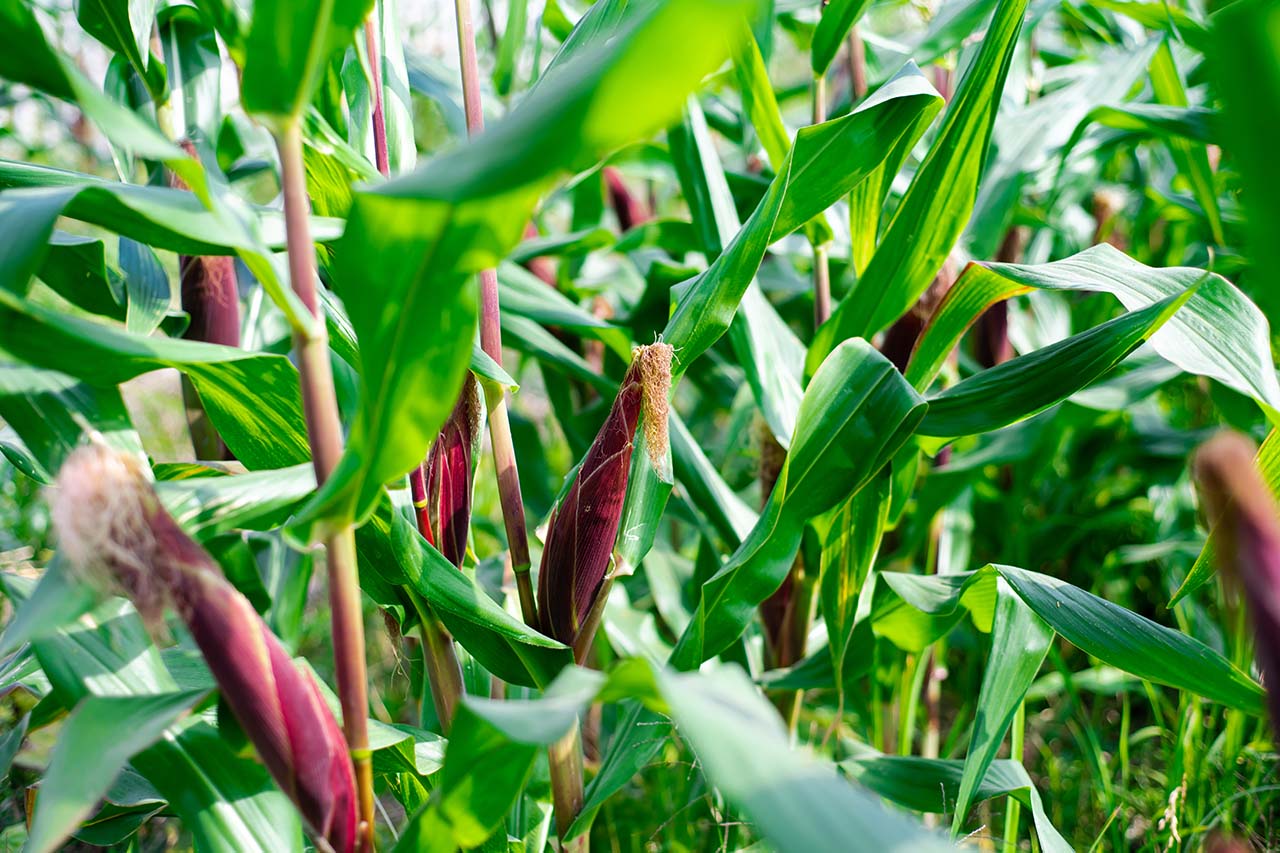
Corn Silk for Bladder Health
Corn silk strengthens and tonifies the trigone muscle at the base of the bladder.2 It can be used as a long-term treatment for chronic bladder problems. This herb is also highly beneficial for treating frequent bladder infections, pyelitis, and interstitial cystitis. It can be combined with mullein root (Verbascum thapsus), horsetail (Equisetumspp.), and saw palmetto (Serenoa repens) to synergize the bladder tonifying actions. Corn silk helps to treat incontinence resulting from bladder weakness. It works well for children who wet the bed frequently or feel the constant need to urinate when traveling. Corn silk can be used during pregnancy to treat a hyper-reactive bladder and bladder weakness. It also strengthens the bladder weakened by pregnancy, childbirth, menopause, or aging. It is beneficial for helping to address a cystocele. Corn silk can be helpful for the long-term treatment of benign prostatic hypertrophy because it reduces urinary frequency. It can be used as a soothing recuperative agent following antibiotic treatment for prostatitis.
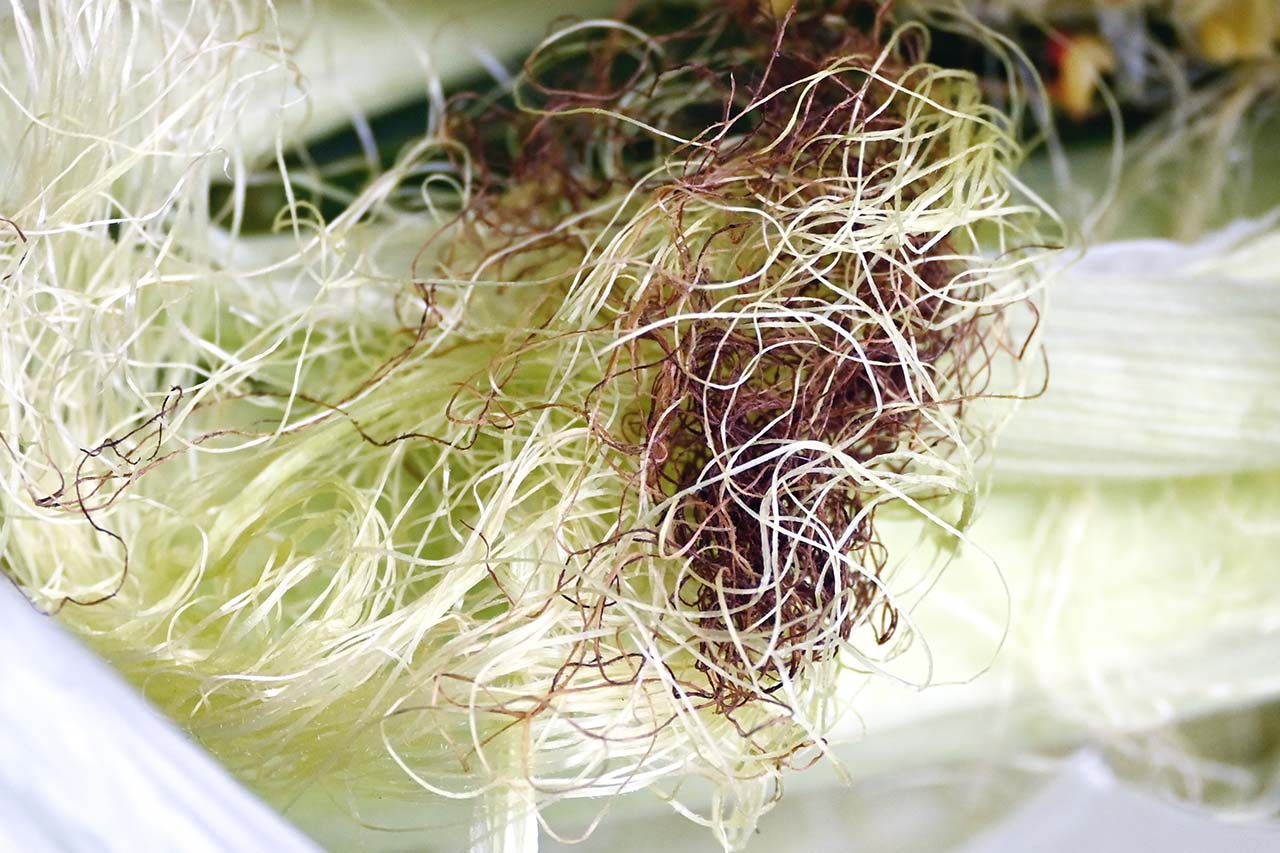
Corn Silk as a Diuretic
Corn silk is a soothing diuretic that subtly reduces discomfort from passing nonobstructive kidney stones. The tea aids in flushing the stones, and some herbalists claim it is an antilithic, which may prevent kidney stones from forming.

Corn Silk as a Demulcent
The mucilaginous polysaccharides have demulcent properties that are beneficial for soothing mucous membranes lining the hollow organs, such as the lungs, digestive tract, and urinary tract. Corn silk tea aids in treating a dry cough and inflammatory conditions of the digestive and urinary tracts.

Corn Silk for Skin Health
The poultice and fomentation are effective as emollients, anti-inflammatory agents, and vulneraries. Corn silk contains allantoin, which stimulates the regeneration of connective tissue. Topical applications aid in treating cuts, abrasions, rashes, diaper rash, dermatitis, and hot, dry skin conditions such as eczema or psoriasis.
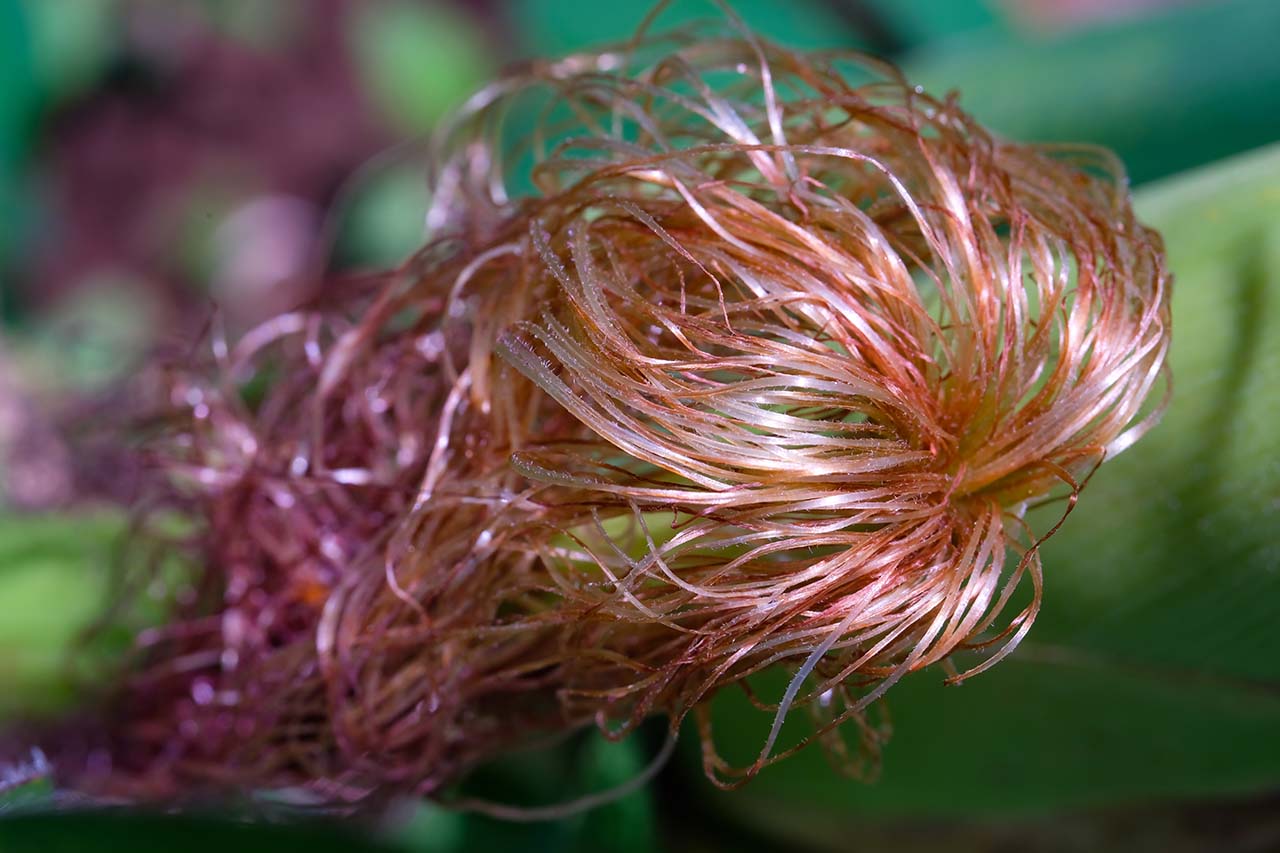
Traditional Uses
Corn was prepared as a wafer bread known by various names, including piki (Hopi), hewe (Zuni), mowa (Rio Grande Tewa), and guallabe (New Mexican Spanish). It continues to be made into atole, a kind of gruel, and posole, hominy soup. People throughout South and Central America prepare a variety of fermented and non-fermented beverages from corn called chicha and a spirit from corn stalk juice called pulque de mahis.3 Corn flower (corn silk) tea has been used to treat stubborn coughs and asthma.4 For more accounts of the traditional uses of corn as food and medicine and its historic and cultural contexts refer to Healing Herbs of the Upper Rio Grande.
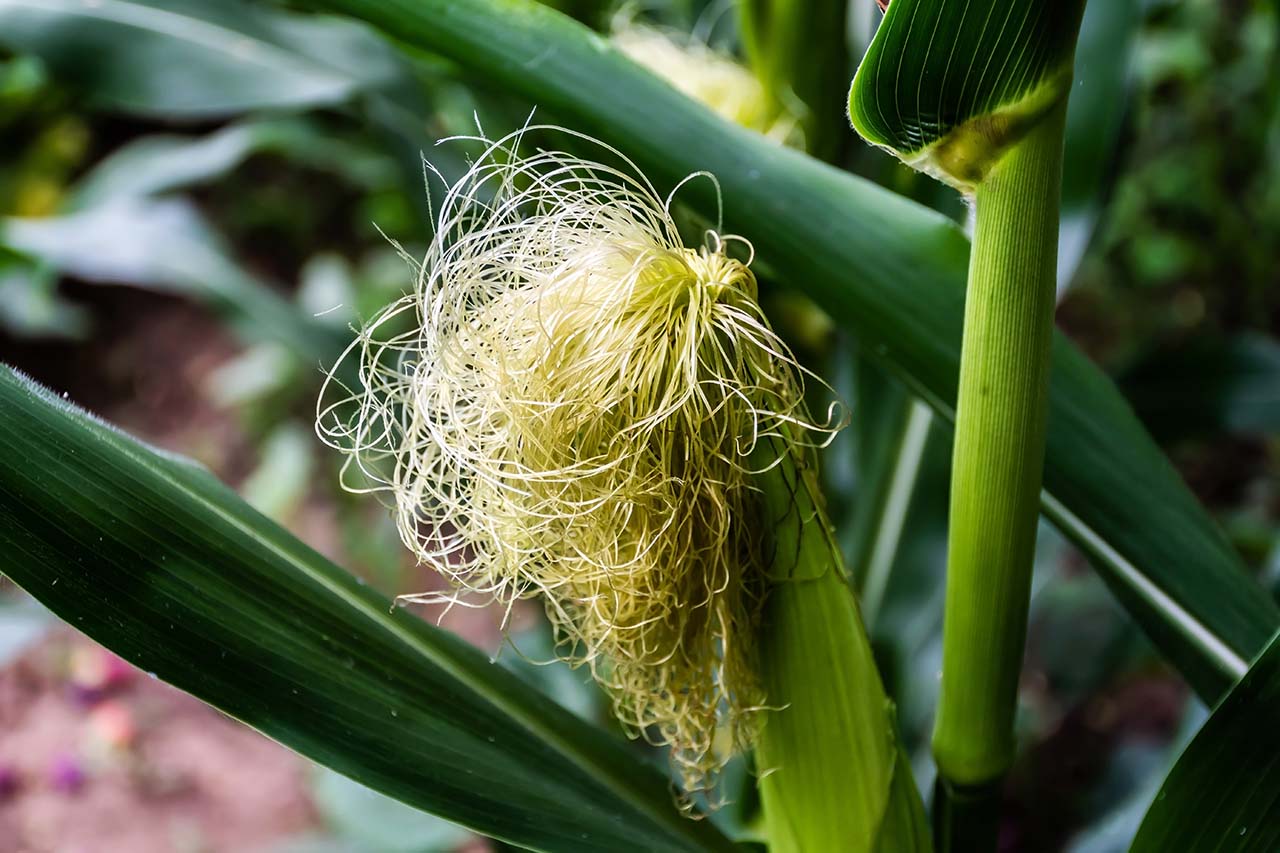
Constituents
Corn silk contains a fixed oil, volatile oil (carvacrol and thymol), gums, resins, saponins, mucilaginous polysaccharides, sugars, bitter glucosidic substances, a crystallizable acid (maizenic acid), flavonoids (maysin), anthocyanins, allantoin, sterols (B-sitosterol and stigmasterol), an alkaloid (hordenine), hydrocarbons, cryptoxanthin, tannins, plant acids (malic and tartaric), minerals (potassium), and vitamins C and K.5,6,7

What’s in a Name?
The genus name Zea originates from ancient Greek, and it is a generic term for cereal and grains. Some scientists believe it also means "sustains life." The species name mays is an adaption of the word maize, derived from the Spanish form of the Indigenous Taíno word, maiz, meaning “life giver.” The common name maiz came from several languages and evolved into the following names: maíz (Spanish), mais (German), maïs (French), and milho (Portuguese). Other common names for corn include jagung (Malaysian or Indonesian) or to-morokoshi (Japanese). In English-speaking countries besides the U.S., Canada, Australia, and New Zealand, the word corn can refer to any cereal, though usually it refers to the predominant cereal in a specific locale.
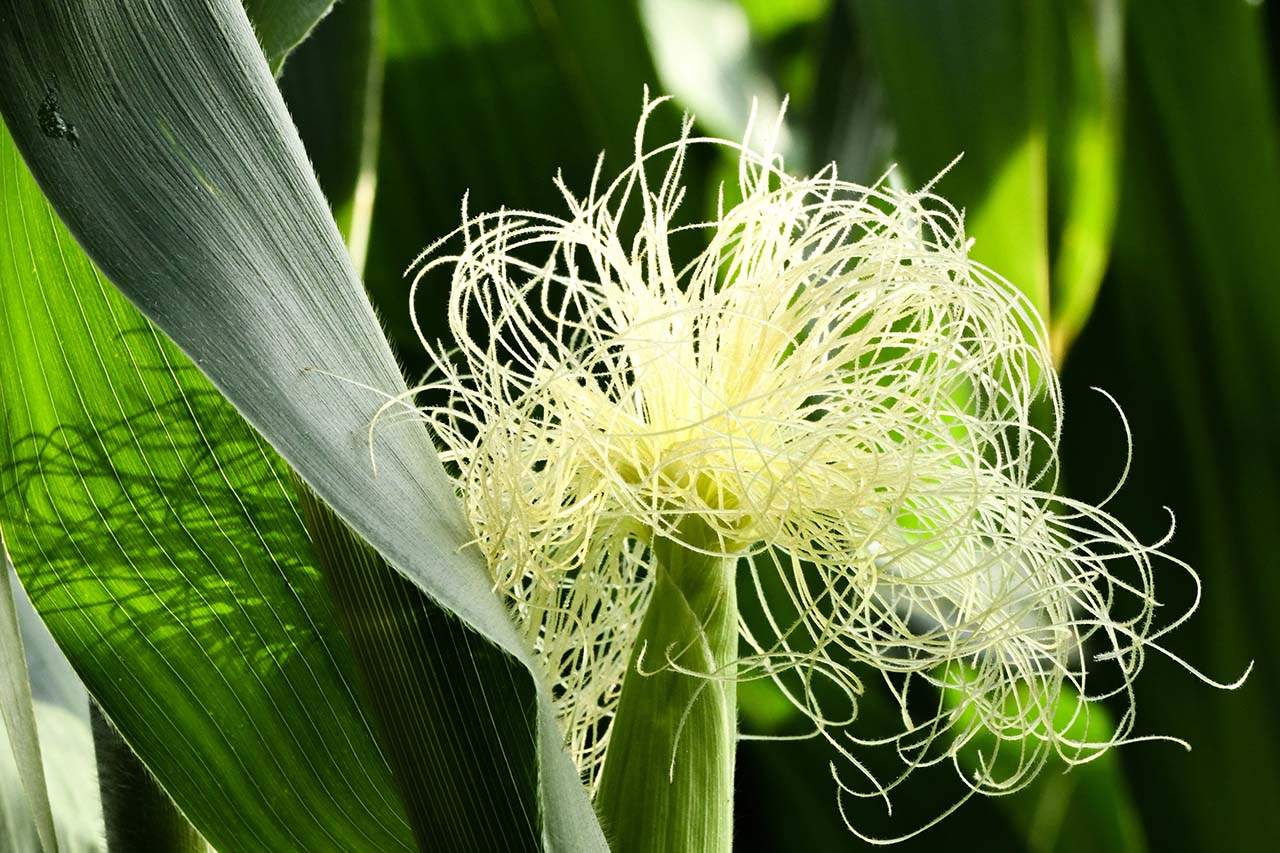
Botanically Speaking
It is speculated that corn was developed over 20,000 years, and all varieties developed before the Europeans arrived in the New World. Scientists believe that corn is autochthonous in the Americas, and is native to the southern U.S.8 Others postulate that corn was domesticated from the wild plant teosinte, Zea mexicana, in Mexico’s Tehuacan Valley.9
Corn is an annual grass that thrives in warm climates in full sun with well drained, alkaline soil. It responds optimally in fertilized soil with a high nutrient content. There is one species of corn, Zea mays, and many varieties.
Corn is monoecious and grows approximately eight feet tall. Sheathing leaves (up to four feet long) grow from each node of the tall stem. Male spikelets bearing two florets each grow in terminal racemes called tassels. The female spikelets are held in inflorescences (ears) in the leaf axils within sheaths of leaves. Each ear has a pithy core (cob) on which the female flowers attach. Each female flower extends a long, silky, filamentous, greenish style (up to seven inches long), known as the corn silk. The silk protrudes out the end of the ear, eventually drying and shriveling up after pollination. The fruit is a caryopsis, or kernel, with a range of colors, including yellow, grey, red, purple, white, and black.10
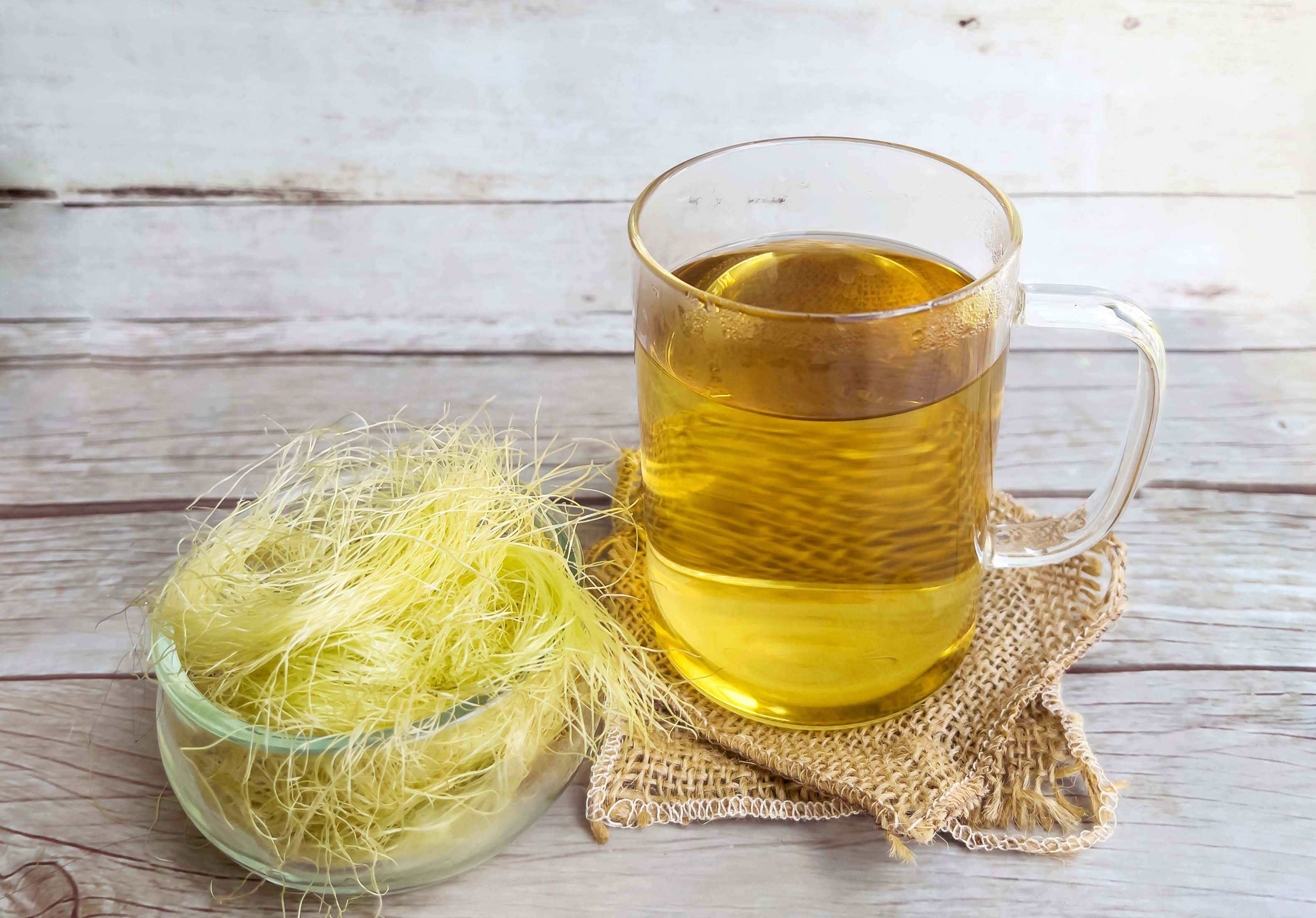
Plant Preparations and Dosage Suggestions
Note: Corn silk from organic, non-genetically modified corn is recommended for all medicinal preparations.
- Tincture: Fresh silk [1:2–1:3, 60–95% alcohol]; recently dried silk [1:5, 50% alcohol]; consume 15–90 drops, 3–5 times daily.
- Glycerite: Fresh silk [1:2–1:3, 50% glycerin and 50% alcohol] or [1:2–1:3, 60% glycerin and 40% spring or distilled water]; consume 15–90 drops, up to 4 times daily.
- Tea: Prepare a hot or cold infusion; consume 8–12 ounces, 3–4 times daily.
- Topical Use: Apply the fomentation or poultice to inflamed skin.

Special Considerations
If you have a sensitivity to corn kernels and are concerned you might have trouble ingesting corn silk, keep the following in mind: corn kernels contain different proteins that can trigger reactions in the gut and immune system. However, the silk doesn’t have the same proteins. I’ve never witnessed anyone having negative reactions to corn silk, even with sensitivity to corn kernels. Proceed with caution and consult with a practitioner if you are concerned.
Corn silk is contraindicated in cases of obstructive kidney stones, edema related to impaired heart or kidney function, or kidney inflammation. Otherwise, corn silk is considered safe for children, pregnant or breastfeeding people, and the elderly. There are no other known contraindications.



